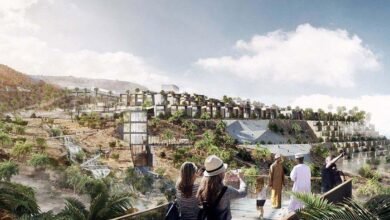Oman Unveils RO11.8bn Budget for 2025, Focusing on Social Development and Economic Growth
Oman Horizon Bulletin

Oman’s Ministry of Finance has revealed the General State Budget for the 2025 fiscal year, projecting public spending at RO11.8 billion, marking a 1.3% increase over the 2024 estimate.
The budget aligns with the objectives outlined in the 10th Five-Year Development Plan and Oman Vision 2040, reflecting the government’s focus on enhancing social sectors and driving economic growth.
A significant portion of the total public spending, RO8.555 billion (72%), is allocated for current expenditures, while RO4.440 billion is earmarked for development and investment. The government expects total revenues to reach RO11.180 billion, a 1.5% rise from the previous year, based on an oil price assumption of $60 per barrel and an average production of 1 million barrels per day. Oil and gas revenues are anticipated to contribute RO7.607 billion, with non-hydrocarbon revenues estimated at RO3.573 billion.
Finance Minister Sultan bin Salim al Habsi highlighted that the budget aims to ensure financial sustainability and target real GDP growth of at least 3% in 2025. Approximately 42% of the total spending, or RO5 billion, is directed towards vital social sectors such as education, social security, and healthcare. Education will receive 39% of this allocation, followed by 28% for social security and 24% for healthcare. Furthermore, RO557 million is set aside for social protection programs, while RO1.14 billion will fund development projects with a significant economic impact.
The budget also provides for subsidies across various sectors, including RO577 million for social protection, RO520 million for electricity subsidies, RO194 million for water and sanitation, and more.
Key projects for 2025 include the completion of 20 new government schools, tenders for 22 additional schools, the completion of nine government hospitals, and the expansion of the Muscat Expressway, among other infrastructure developments.
The budget anticipates a deficit of RO620 million, or 5.5% of expected revenue, which will be covered through a combination of local and external borrowing and a withdrawal from reserves. Oman’s total financing needs for the year are estimated at RO2.454 billion, which also includes scheduled loan repayments.
In contrast, the preliminary results for 2024 indicate a surplus of RO540 million, thanks to higher-than-expected revenues, which will be used to enhance social spending and reduce public debt. As a result, Oman’s public debt decreased from RO15.2 billion to RO14.4 billion in 2024, saving RO110 million in debt servicing costs.
This balanced approach reflects Oman’s ongoing commitment to fiscal discipline, economic growth, and long-term financial stability.
For all the latest news from Oman and GCC, follow us on Instagram, like us on Facebook & subscribe to our YouTube Channel, which is updated daily.





